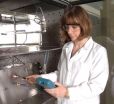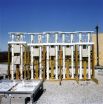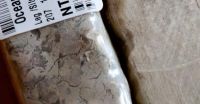(Press-News.org) (Edmonton) If you have time to quickly swipe your pager or cell phone three times, that would be your best bet to get rid of most of the bacteria. And a simple tissue moistened with saline would do the trick. But if you only have time for a single swipe of a 'dirty' phone – you'd be better off reaching for a disinfectant wipe.
Those are the highlights of a recently published research study that appeared online in PubMed, with the discoveries having been made by a team of researchers in the Faculty of Medicine & Dentistry at the University of Alberta.
"It was the mechanical removal, not the actual act of the disinfectant that was key," says Dr. Sarah Forgie, a Pediatric Infectious Diseases Specialist in the Department of Pediatrics.
Medical student Andrea Berendt, who was working with Forgie at the time, liked the idea so Berendt came up with the protocol and conducted all the experiments in a lab over two months. The duo worked with Dr. Robert Rennie, a Professor in Laboratory Medicine and Pathology, Pediatric Epidemiologist Donald Spady and technologist LeeAnn Turnbull.
Three types of bacteria – Staphylococcus aureus (MRSA), Enterococci (VRE) and Pseudomonas aeruginosa – were each prepared in a mixture and streaked onto sterile plastic Petri dishes, then allowed to dry. Numerous bacteria contaminated plates were prepared throughout the summer – all in the same manner – so each type of bacteria could be tested with five different types of wipes and then again with varying amounts of swipes – one swipe, three swipes and five swipes.
Each 10 cm diameter plate was wiped for one second and in a manner that the entire surface was swiped, using a flat baton. The plates were then allowed to dry for 10 minutes. Afterwards, bacteria samples were put onto special lab plates, incubated for at least 24 hours at 35C and then the bacteria colonies were counted.
Research results demonstrated that bacterial counts dropped significantly the more often a plate was swiped – regardless of the type of wipe used. Swiping the contaminated plates 3x decreased the bacterial load by 88% on average, compared to just swiping a plate once. Swiping a plate 5x vs. 3x didn't result in an additionally significant decrease in bacteria. And a simple saline wipe appeared to be just as effective as disinfectant wipes when the plates were swiped 3x or more. However, if the plate was swiped just once – disinfectant wipes were better at reducing bacteria than simple saline wipes.
INFORMATION:
The research was supported in part by a grant from the Women and Children's Health Research Institute.
For more information, please contact:
Raquel Maurier, Communications Associate
780.492.5986 (office); 780.224.7751 (cell); raquel.maurier@ualberta.ca
END
Few specimens inspire greater thrills among fossil collectors than a complete trilobite. These ancient arthropods – relatives of lobsters, spiders and insects – went extinct more than 250 million years ago, but are sometimes found in beautifully preserved condition. In rare instances, an entire population of trilobites is found fossilized together. Carlton E. Brett finds evidence for ancient environment and behavior in these mass graves.
Brett, University of Cincinnati professor of geology, will present his findings March 20 at the Geological Society of America regional ...
A promising new approach for checking the accuracy of measurements of hazardous indoor air pollutants may soon be ready for prime time, report researchers from the National Institute of Standards and Technology (NIST) and Virginia Tech.* The measurement tool, a reference sample for volatile organic compounds (VOCs), would be a boon to testers of indoor air quality and to manufacturers of paints, rugs, cleaners and other building products.
The researchers put their innovation—thin squares of plastic saturated with vapors of a common solvent—through the paces at four testing ...
Just as a chain is as strong as its weakest link, a building is as secure against the environment as its most degraded joint sealants, about 50 percent of which fail in less than 10 years after installation.
The upshot for U.S. homeowners is that moisture damage due to failed sealants is responsible for much of the $65 billion to $80 billion they collectively shell out for house repairs annually.
Researchers at the National Institute of Standards and Technology (NIST) are assembling a toolkit of measurement devices and scientific data that will help manufacturers of ...
A recent study from North Carolina State University shows that while the number of visits to state parks across the country has grown, fund support for park operations has been significantly reduced. The reduction in funding during a time of park growth endangers the more than $20 billion in economic impact that state parks have on the nation's economy.
"Obviously the reduction in general-fund support for operations puts stress on America's state-park systems," says Dr. Yu-Fai Leung, NC State associate professor of recreation ecology, park planning and visitor management, ...
PHILADELPHIA -- More than three quarters of domestic violence victims who report the incidents to police seek health care in emergency rooms, but most of them are never identified as being victims of abuse during their hospital visit. These findings, from a new University of Pennsylvania School of Medicine study, point to a missed opportunity to intervene and offer help to women who suffer violence at the hands of an intimate partner.
"Emergency departments are a safety net for women with health issues of all kinds, but our study shows we're not doing a good enough job ...
16.03.2011 | Potsdam: The earthquake disaster on 11 March 2011 was an event of the century not only for Japan. With a magnitude of Mw = 8.9, it was one of the strongest earthquakes ever recorded worldwide. Particularly interesting is that here, two days before, a strong foreshock with a magnitude Mw = 7.2 took place almost exactly at the breaking point of the tsunami-earthquake. The geophysicist Joachim Saul from the GFZ German Research Centre for Geosciences (Helmholtz Association) created an animation which shows the sequence of quakes since March 9.
The animated image ...
Eating out in the UK at top restaurant chains just became more affordable to all thanks to the latest deals from consumer voucher codes website DiscountVouchers.co.uk. The country's diners can enjoy money-saving deals this month redeemable at famous restaurants Zizzi, Ask and La Tasca.
Zizzi is one of the country's favourite Italian restaurant chains and this month DiscountVouchers.co.uk can help people enjoy eating out there without having to break the bank. Available at present on the DiscountVouchers.co.uk website is a Zizzi voucher for getting 2 main meals for only ...
Bursts of intense global warming that have lasted tens of thousands of years have taken place more frequently throughout history than previously believe, according to evidence gathered by a team led by Scripps Institution of Oceanography, UC San Diego researchers.
Richard Norris, a professor of geology at Scripps who co-authored the report, said that releases of carbon dioxide sequestered in the deep oceans were the most likely trigger of these ancient "hyperthermal" events. Most of the events raised average global temperatures between 2° and 3° Celsius (3.6 and 5.4° ...
In just a few months, millions of young adults will graduate from college and step into productive careers in the global economy. Meanwhile, those already involved in standardization, particularly in the engineering and technology sectors, and increasingly those with policy, legal, and business backgrounds, are working in a new environment where standards play a crucial role in international trade and competitiveness. But according to the attendees of a meeting of the Asia-Pacific Economic Cooperation (APEC) Subcommittee on Standards and Conformance, comparatively few new ...
When you pull off the highway and head into your favorite campground, don't forget to tune in the latest Internet program - The RV Chef.
RV Chef is produced for RVers to show that food on the road does not have to be fast or mediocre. With some planning and preparation, wonderful meals are no further away than the picnic table.
As the producer and chef, George Murphy has gained a lot of experience in the 25 years he's been RVing. "We hope to produce one program every week or so that will run from 5 - 8 minutes and each and will show the viewer how to make wonderful ...



